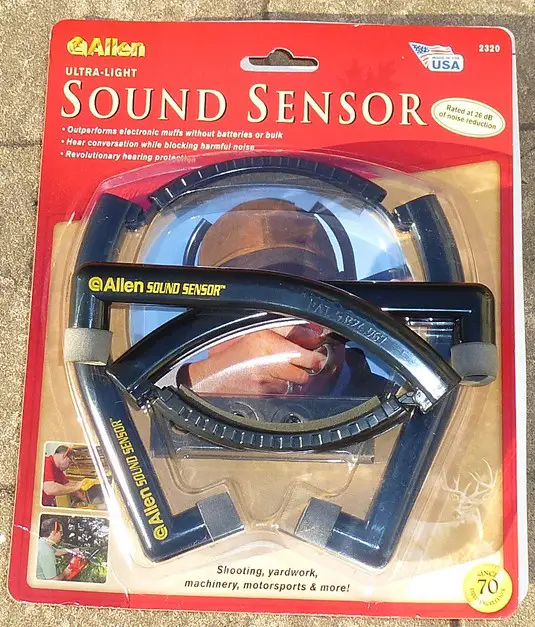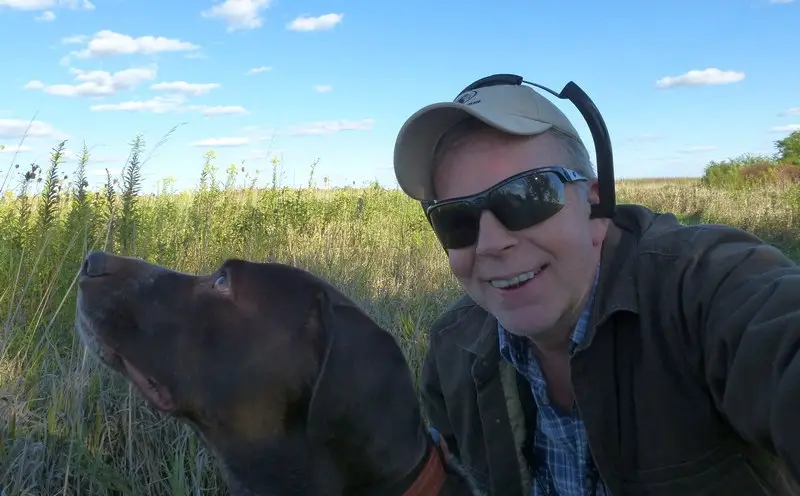


Allen Sound Sensor Hearing Protectors: The Best Accessory in Years

They weigh a small fraction of any other muffs at just 1.7 ounces, need no batteries, and allow you to hear normal conversation. There is nothing that competes with this style of hearing protection for comfort and convenience, regardless of price.
Once in a great while, something comes along that is innovative, practical, economical, and better for many purposes than anything else that has entered the market. That is exactly the case with the Allen “Sound Sensor” hearing protection unit. It isn't a new idea, but it is brand new to me and likely to most hunters and shooters as well. The main idea goes back to Jozef J. Zwislocki of Syracuse University, who authored a book in 2002 titled Auditory Sound Transmission, described as “an integrated, state-of-the-art description and quantitative analysis of sound transmission from the outer ear to the sensory cells in the cochlea of the inner ear.” Prior to that, in 1998, US Patent 5824967 was awarded to Mr. Zwislocki for “An ear muffler device suitable for coupling to the entrance of the ear canal of a person to reduce the level of ambient noise in the ear canal.”
That sounds about as exciting as watching paint dry or weeds grow. Ten years after the Zwislocki patent SensGard was awarded an ornamental patent based on the same principles. The roots of this type of ear muffler go back to a device created in the 1850s by Hermann von Helmholtz, the "Helmholtz resonator." Today, Allen is marketing this “Sound Sensor” product, with other companies including 3M and SensGard having essentially the same type of units. To the hunting and shooting industry, it still seems largely unnoticed. I personally had no idea it existed until Don Anderson, VP of Ed's Public Safety, called my attention to it.
Don had seen it at the SHOT Show a few years back, and ignored it as it felt light and cheap so it seemed to him it wasn't worth trying. That is until a few months later when Don saw the Glock team using a SensGard 31 db model at one of his Law Enforcement demonstrations. Don figured if they were used regularly for protection in conjuction full auto 9mm demos, there was more than enough merit in them to give them a try. Don Anderson has been using them ever since and graciously sent me a pair to review. Three years ago, ShootForum.com in the U.K. Conducted their “Mammoth Hearing Protection Test,” publishing twenty-seven pages of scores and results. When the smoke cleared they had three head and shoulders above the rest winning products. The “Napier Pro9,” a 32 DB model, as they are branded in the U.K. was one of the three winners, scoring 20/20 in terms of practicality and ease of use.
The Allen Sound Sensor is an extremely lightweight over the head mounted unit that not only offers an EPA 26 dB Noise Reduction rating, but allows you to hear normal conversations, range commands, etc., with no electronics (or batteries) used. It was easy enough for me to carry on conversations, hear the dog, and hear pheasants cackling as well.

Buddy keeps a watchful eye on the doves flying by, wondering why they are no longer dropping. I explained that fifteen is the daily bag limit, but that didn't seem to stop his interest.
After a busy evening on the dove field, bagging my limit of fifteen doves with the customary multiple extra shots used because doves don't always fly correctly, it felt like I hadn't been shooting at all. This was with a 24 inch barrel Benelli M2, Trulock Precision Hunter Extended Choke, and shooting exclusively Winchester AAH207 1 oz. shotshells.
Hearing protection and shotguns are often a hassle. Foam earplugs, like the “3M E-A-R Classic Earplug” correctly installed might offer a NRR of 29 dB. Normal conversation is a hassle and trying to hunt with passive earing protection isn't a happy circumstance, so most hunters just do without. Bulky muffs make shotgun stockweld a problem, so my longtime pick has been the “Howard Leight R-01526 Impact Sport Electronic Earmuff.” With a NRR of 22 dB, they still get hot and while low-profile, they still can be stockbangers depending on the gun.
For outdoor shooting and hunting, these Allen Sound Sensors are superb. My childhood family doctor always scolded not to put anything into your ears bigger than your elbow, so Doc Wehrspann would be satisfied with these things, as they seal against your ear canal but do not protrude into it. After a short while, it is easy to forget you have these things on at all. Little weight and no sweat, literally.
Some folks that deal with hearing issues daily, like my longtime friend Mike Rooney will correctly point up that you if you want the best hearing protection, you need a set of bulk muffs that covers the mastoid area of your skull, that using both plugs and big, bulky phones is worth considering if you are around jet engines all day and the like.
The hearing protection that you use and use correctly is infinitely more effective than the stuff you left at home, took off because you couldn't stand the heat, or the unusable, distracting stuff that smashes into your buttstock. The Allen Sound Sensor is a fabulous bargain, selling for less then twenty dollars and I quickly ordered another couple of pair from Amazon with no delay. This much be one of the best-kept secrets in shooting accessories; I had no idea they existed until just a few days ago. It gets my vote as the “Accessory of the Year” with no hesitation. As soon as you try a pair, you'll likely wonder (as I did) why you wasted so much time with the other stuff.
Copyright 2012 by Randy Wakeman. All Rights Reserved.
Copyright 2012 by Randy Wakeman. All Rights Reserved.

Custom Search



